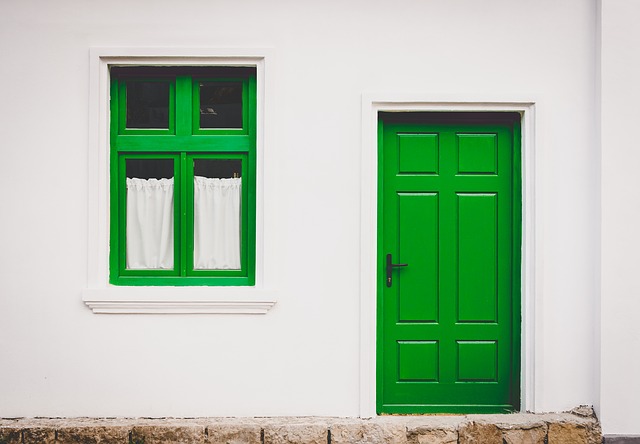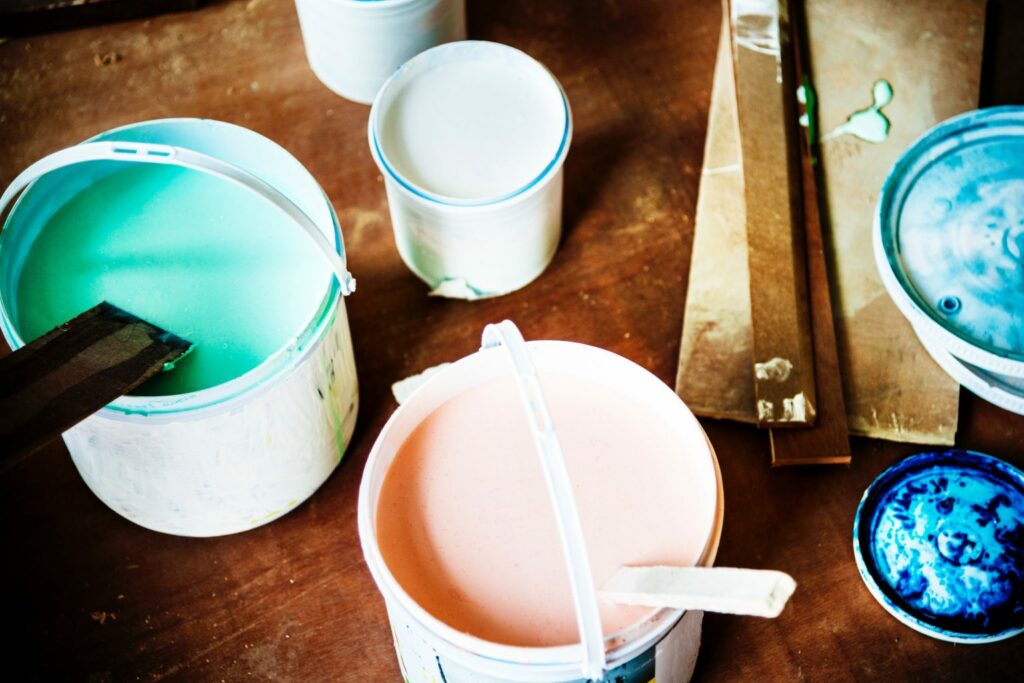If you’re opting for a timber or composite front door, you’ll have a vast range of colours to choose from, ranging from the bold and brash to the subtle and reserved. You might think choosing one is a simple matter of picking your favourite colour and buying a tin of gloss paint. But things aren’t quite that simple!
Happily, we’ve put together a short guide that will explain everything. Let’s consider how we might decide what sort of door would best match our homes.
What Colour Should External Doors Be?
So what colour is best for painting an external door? The answer will depend, as always, on your personal taste. Since you don’t have to look at your front door for any significant stretch of time, you can get away with painting it a bolder colour than you might paint your living room walls. Such a colour scheme will help your property to stand apart from the rest of the street and make it easier for house guests and couriers to locate.
The most popular colours for front doors are undoubtedly white, black, red, blue, yellow and natural wood stain.
On the other hand, you might prefer to go for something a little more classic and down-to-earth. The jet-black of the door to 10 Downing Street is a great example. The office of the Prime Minister probably wouldn’t have quite the same gravitas were he to exit and enter the building through an enormous lime-green door. When making your decision, you should consider the structure of the surrounding house. A white house will cause a brightly-coloured door to ‘pop’ from its surroundings more convincingly.
What colour should exterior door trim be?
You’ll want to pick a trim for your door that complements the door itself. Ideally, it should be something very reserved. A white frame will make a colourful door stand out in just the same way as white brickwork might. On the other hand, a dark frame might stand apart. A brightly-coloured frame is almost always risky - if you must do it, then try to match it with the door itself.
Should All Exterior Doors Match?

Your property will almost always look best if you take a cohesive approach to exterior decoration. With that said, external doors need only match closely if they’re both visible at the same time. Given that it’s impossible to see the doors at the rear of your property at the same time as those at the front, it’s perhaps overegging it to repaint one because you’re repainting the other. With that said, there’s no reason not to.
A bigger aesthetic concern should be the windows, which will be visible alongside and above your front and rear doors. Most windows in the UK are white, which is pleasingly neutral and easy to match your door (and its frame) with. Another popular choice for front doors is the brown that comes from a natural woodstain. If you’re shopping for exterior colour for doors, then going for a similar shade of brown might be worthwhile. On the other hand, the darker colours around your windows might well contrast nicely with something brighter. Eye-catching scarlet might well be a winning choice!
You’ll also want to think about your garage door. If it’s placed right next to the front door and the two clash, it might look overpowering. If you’re going to repaint one, it’s worth considering repainting the other to match. A red door alongside a red garage, for example, can lend cohesion to the entire property.
Can I paint my uPVC door?
Whilst it’s technically possible to paint a uPVC door, the results are often unpleasant. The surface of the material is built to be glossy and frictionless, and won’t bond well with paint, which will become cracked and ugly.
Choosing Front Door Paint

Let’s think about what to paint exterior doors with. You can’t use the same paint you might apply to your home’s interior walls to your external door. You need something that’s glossy enough that all of the rainwater will slide off it, and all of those bumps and scrapes that occur when you’re bringing the shopping in won’t leave a mark.
If you’d prefer something a little less shiny, then you might opt for a lower-sheen ‘satin’ finish, which represents something of a compromise between the flat finish of matt and the durability of gloss. Duller finishes like this will disguise any imperfections in the surface of the timber, making them a good choice for older doors that look a little rough. Bear in mind that you’ll need to reapply this sort of paint more frequently if the door is to maintain its good looks, so be sure to factor the extra work into your decision. Should front doors be gloss or satin? Again, it depends on your personal taste and the amount of painting you’re prepared to do over the years!
The appearance of your front door will be determined by your preparation just as much as the choice of paint. Start by filling in any imperfections with wood filler, before sanding and cleaning up with a soft cloth and a bottle of white spirit. An oil-based coat of primer will provide the backdrop that’ll get the best from your paint. A miniature roller will help you to spread the paint evenly, and a dry brush will complete the effect.










